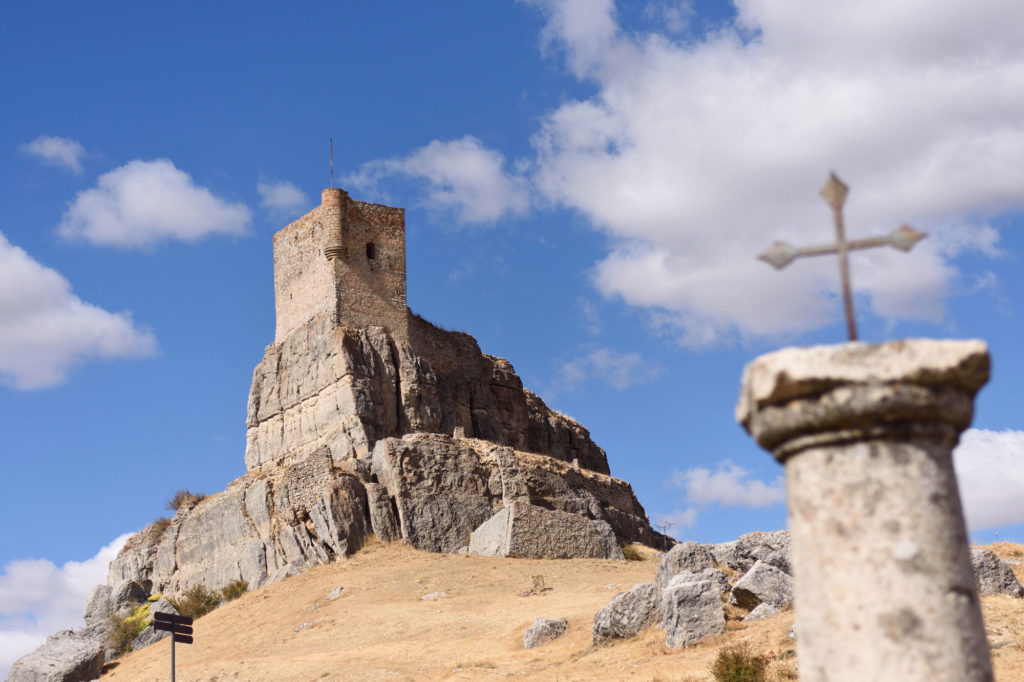We also met José Maria, who like most of the inhabitants of his age was an extra in the film. His job was to stand aloft the walls of Troy holding a spear.
Most of the filming in the village of Atienza took place around the old town walls, and at the spring, or drinking fountain known as ‘Fuente de San Gil’. The fountain can be seen in early scenes when the Trojan women are herded out of the city, which is mostly seen from the outside as a series of ruined walls.
About five minutes into the film, with women and children being carted off to slavery and worse, we get what is really the only full view of the castle in splendid, smoking sunset reds, and see what a wonderful landmark it is in the middle of the endless plains of Castilla, which is quite far in fact from the sea and the Greek ships, which we never see but receive a lot of news from, carried mostly by Brian Blessed.
Perched on a hilltop with impressive views, the village has a number of old churches and medieval buildings, as well as a castle. It forms part of the legend of El Cid, and he is quoted as having commented on the strength of its position as he passed through into exile in one of his less glorious moments.
The castle of Atienza has existed in one form or another since the Iberians dominated the Peninsula and can be seen from many miles away. Standing beneath its sheer walls, it is easy enough to imagine standing below the walls of a great city such as Troy.
The castle was built by the Arabs between the XI and XII centuries.
El Cid considered it too strong to attack and it wasn’t until King Alfonso VI took Toledo that the castle surrendered to Christian rule.
In the XV century Atienza was scenario to various battles between the rival kingdoms of Navarra and Castilla.
The castle had one prestigious guest, the Duke of Calabria, who was invited to stay there whether he wanted to or not by the Catholic Monarch, Fernando.
The castle suffered during the Napoleonic invasion and during the Spanish Civil War.
